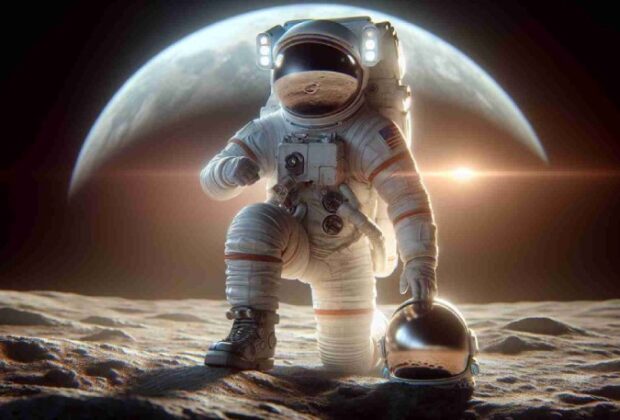The moon landing of a foreign astronaut is scheduled for Wednesday as part of NASA’s Artemis program, Vice President Kamala Harris announced.
In light of today’s announcement, the United States has reaffirmed its commitment to sending international astronauts on Artemis missions that will allow them to walk on the moon and join an elite club currently comprised of only 12 people. The United States had previously committed to sending international astronauts around the moon.
At a meeting of the White House’s National Space Council on Wednesday in Washington, DC, Harris stated, “Today in recognition of the essential role that our allies and partners play in the Artemis program, I’m proud to announce that, alongside American astronauts, we intend to land an international astronaut on the surface of the moon by the end of the decade.” Attending the meeting were National Security advisor Jake Sullivan and Secretary of State Antony Blinken.
There will be space for four astronauts on each planned Artemis moon landing mission, though not all of them will make it to the moon. Each mission will only send two astronauts to the moon’s surface; the other two will only circle the moon in the Orion spacecraft or the Gateway small space station.
“NASA has committed to three opportunities for European Space Agency astronauts to fly to Gateway, one opportunity to fly a Canadian Space Agency astronaut to Gateway and one opportunity on Artemis II, and one opportunity for a Japanese (JAXA) astronaut to fly to Gateway,” a NASA representative told CNN. “Beyond Artemis II, these crew opportunities have not been designated to specific Artemis missions.”
“NASA could have chosen to do this alone, but they intentionally chose to include Canada and a growing list of international partners. This extraordinary example of US leadership leverages our collective expertise, and it is not only sincerely appreciated, but it is urgently needed in the world today,” Hansen told.
Artemis III, the first mission to land on the moon, won’t take off until at least the end of 2025. That timeline has already been questioned, though, because the space agency is closely monitoring the progress of a SpaceX vehicle that will be used to transport astronauts to the lunar surface and act as the lander for Artemis III.
The NASA official stated, “NASA will make specific crew assignments closer to each mission as the mission parameters and crew criteria are defined.”








